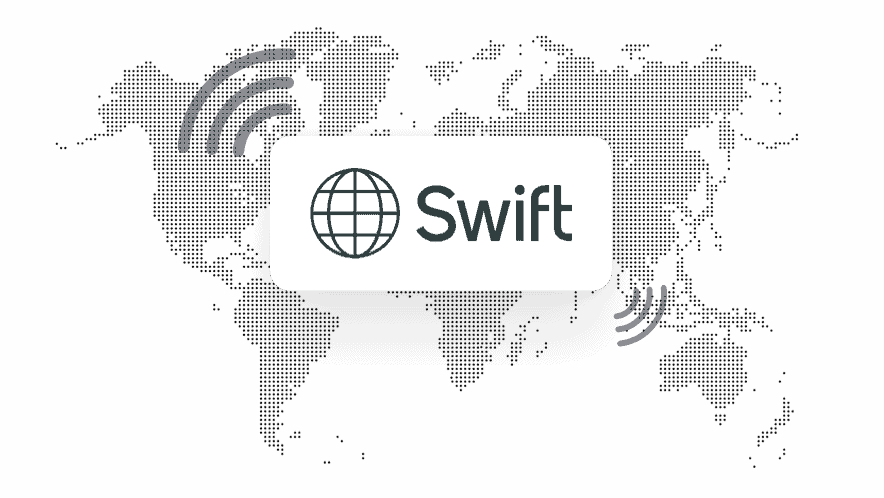Industry Guide
What Is Swift Go?
Swift Go optimizes the speed and transparency of low monetary value cross-border payments
On This Page
What is Swift?
The Society for Worldwide Interbank Financial Telecommunication (Swift) is a member-owned cooperative that provides a standardized global messaging network through which financial institutions can securely exchange information.
Swift was founded in 1973 with the primary goal of improving cross-border transactions. As part of this effort, Swift has developed global messaging standards for international transactions and a range of solutions to address financial industry challenges. In 2021, Swift launched Swift Go to support low-value cross-border payments.

What is Swift Go?
In Swift’s own words, the Swift Go service “enables small businesses and consumers to send fast, predictable, highly secure, and competitively priced low-value cross-border payments anywhere in the world, direct from their bank accounts.”
Swift Go’s primary goals are to create a more predictable payments experience for originators (debtors) and beneficiaries (creditors) and to ensure beneficiaries receive the full amount owed to them. Swift achieves these by restricting the types of fees that can be applied to a transaction, using Swift Go member banks and requiring banks to meet the service-level agreements (SLAs) defined in its SLA rulebook for processing transactions.
A Swift Go transaction is otherwise the same as any other credit transfer sent through the Swift network and follows the same messaging standards. Swift Go offers end users greater transparency by providing additional details about transactions, including their current processing status. As of Q3 2023, the monetary value threshold for Swift Go payments is 10,000 USD, GBP or EUR.* However, this amount and the list of available currencies are expected to grow as the service expands and more banks join the network.
How does Swift Go work?
A Swift Go payment begins with an originator initiating a transaction through their bank. The originator provides specific details, including the beneficiary’s name and account number, the amount they want the beneficiary to receive, remittance data and the purpose of the transfer.
From there, the instructing bank holistically validates the transaction and determines whether it meets Swift Go criteria. This includes identifying the business intent behind the transaction, validating both the monetary amount and currency against Swift Go standards and confirming whether the beneficiary bank (creditor agent) is a Swift Go member.
Once validation is complete, the instructing bank will — if necessary — insert any additional Swift Go member intermediaries needed to reach the creditor agent. If a fee is required, the instructing bank will only apply a type of fee that does not affect the principal balance the beneficiary will receive. All other intermediate processing steps for a Swift Go payment — prior to formatting — are the same as they would be for any other credit transfer.
Finally, the instructing will add the distinct Swift Go service code value to the Swift header of the transaction and pass it on for formatting for clearing. The receiving institution will then use that service code to identify the inbound transaction as a Swift Go payment and process the transaction, using the same approach as the instructing bank.
How does Swift Go relate to Swift GPI?
Swift Global Payments Initiative (GPI) and Swift Go are closely related.
At a high level, Swift GPI is intended to increase the speed and transparency of high-value payments, with or without foreign exchange. Swift Go is intended to support low-value and cross-border payments by guaranteeing that the principal amount is not adjusted throughout its lifecycle.
Swift Go was initially promoted under the Swift GPI umbrella, but Swift has since made it available as a standalone service, meaning that non-GPI member banks are free to utilize Swift Go.
How can financial institutions benefit from Swift Go?
With Swift Go, financial institutions gain access to a global network consisting of more than 200 countries and territories, expanding their geographic coverage and enabling them to connect with customers using a defined set of currencies.
Swift Go payments follow Swift’s standardized messaging format, enabling businesses and individuals to seamlessly send and receive cross-border payments. Like Swift GPI, Swift Go also provides transparency into the characteristics of in-process payments and enables both senders and beneficiaries to track the progress of payments.
The most significant benefit to using Swift Go is that it ensures beneficiaries receive the exact amount owed to them. This makes it an ideal choice for small- and medium-sized businesses or individuals looking to send a guaranteed principal amount overseas.

How does ACI Worldwide support Swift Go?
The ACI Enterprise Payments Platform supports a wide variety of payment schemes and ACH transfer systems, including real-time gross settlement (RTGS), cross-border payments and reporting, plus (CBPR+), Swift GPI and Swift Go.
We’ve designed our Enterprise Payments Platform to provide a seamless end-to-end payment processing experience, from acquisition to post-settlement. Our platform offers comprehensive enhancements, streamlined orchestration and the ability to connect to various back-end and front-end systems with flexible extension options. These elements are designed to help future-proof payment ecosystems to meet changing consumer and regulatory demands.

